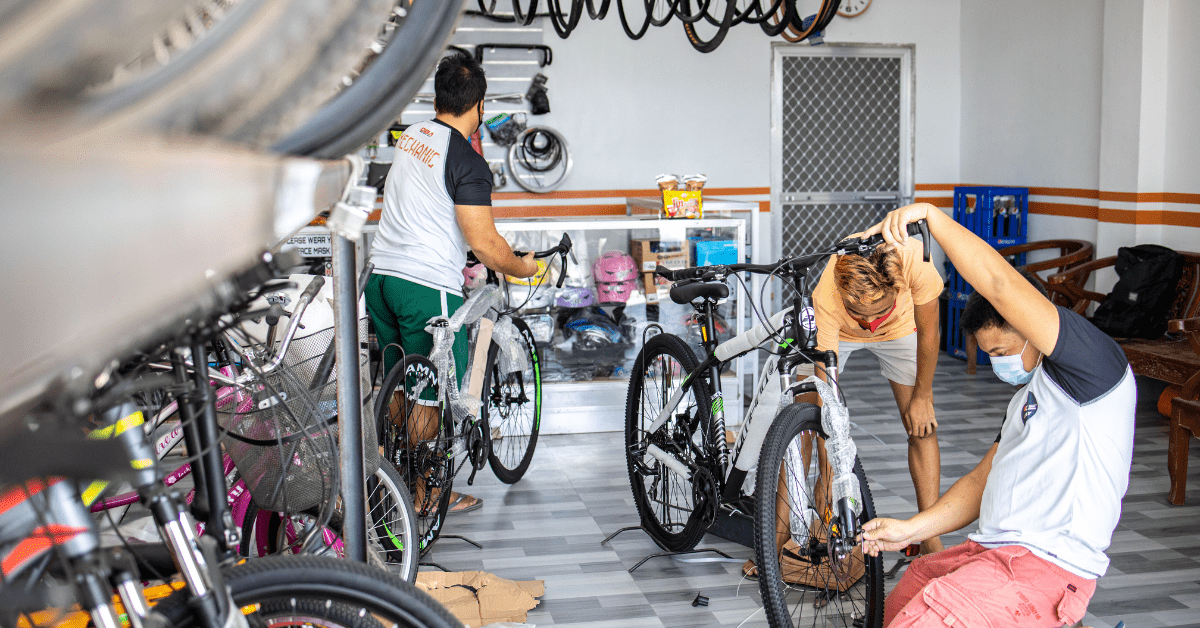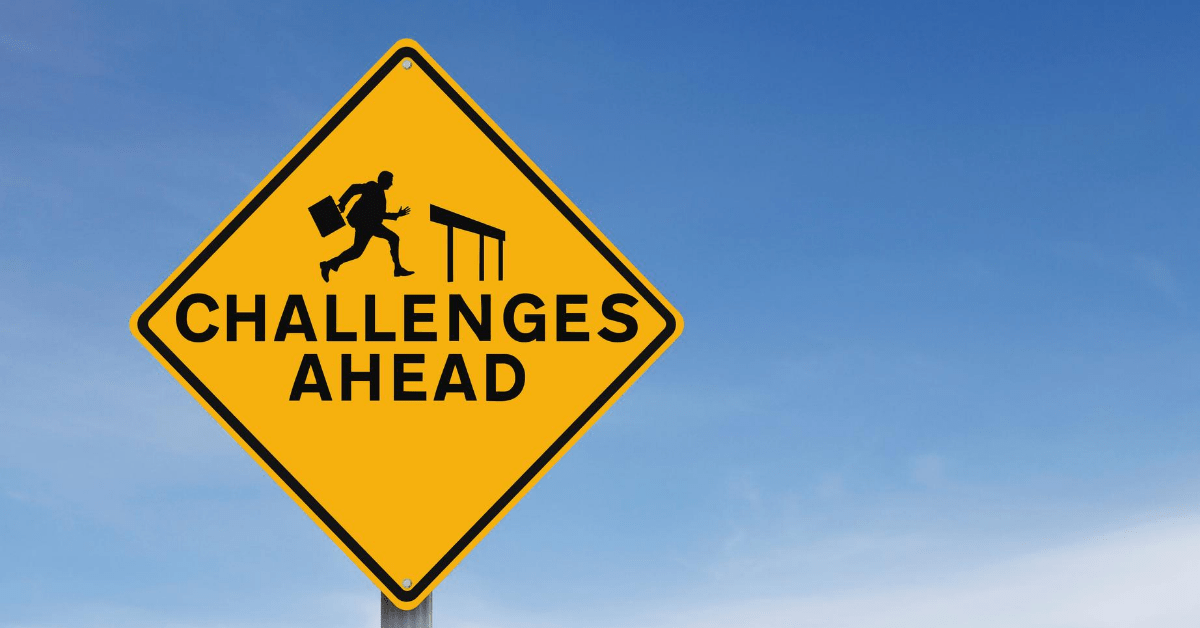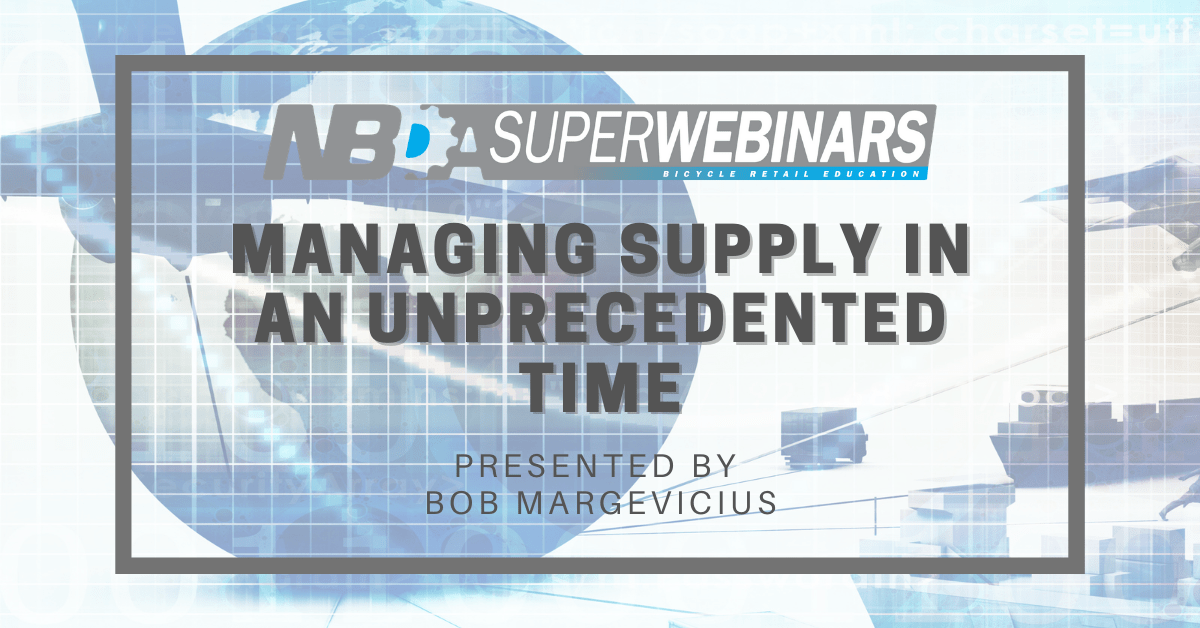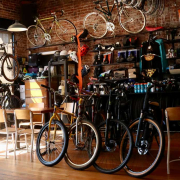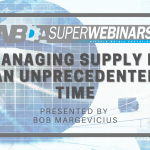The Future of the Bicycle Industry
And what you can do now
by Bob Margevicius
In recent years, the USA bicycle industry has experienced a slow, steady growth amid a series of disruptions. Between 2014 and 2019, dollar sales grew at a compound rate of 3 percent. With each passing year, consumers spent more, propelling impressive investment in burgeoning new segments such as gravel, Ebikes, composite bikes, event bikes, and kids’ bikes. At the same time, ongoing structural shifts spurred digital distribution models also garnering a share of overall revenues.
Then came 2020.
A uniquely disruptive phenomenon, COVID-19 hit the bicycle industry last March. The economy contracted for the first time since 2009. But the bicycle industry has been an outlier. Current data trends show the bicycle industry unit sales will grow 28 percent in 2020.
With vaccine and effective therapeutics on the horizon, I believe consumer behavior will not revert to pre-covid levels.
The bicycle industry stands to benefit from the behavior change from the pandemic — for two primary reasons.
- The industry is in an exciting state of evolution. The cycling trend is accelerating rather than slowing down.
- More importantly, the crisis has brought changes to consumer behavior that is likely to stick. This pandemic pulled the future forward, compressing several years of projected growth into just a few months. Here’s one example. As recently as 2019, unit sales in the USA declined by more than 20 percent. In 2020, retail sales skyrocketed by more than 40 percent. By 2025, the USA bicycle industry revenue is projected to be $8 billion.
Going forward there will be a “new normal.” That “normal” will be a state in which recent changes in consumer behavior become entrenched and gain in strength. The pandemic has caused considerable disruption in how consumers live, work, and play. Homeworkers value personal mobility, realize the value of a bicycle, enjoy the pleasure of cycling while expanding their appreciation of the complete cycling experience.
American cycling businesses, which has been constantly under siege from tariffs, safety, recognition, and aging demographics, is poised to thrive. Built into the industry passion are resilience, agility, and capabilities to capitalize on servicing the growing needs, as well as capturing the emerging opportunities.
Conventional wisdom is that proprietary products or distribution channels were the main drivers of the ability to win cyclists. And both still matter. But in 2021 and beyond, the industry can now meet consumers where they are and match their offerings with the personal and physical needs most salient with consumers.
The winning formula is innovation combined with distribution, trustworthiness, and the ability to effectively deliver new experiences.
It is always dangerous to make predictions, especially when we are still learning about the full impact of COVID-19. Experts reviewing the first several months of lockdowns are convinced consumer changes brought on by the pandemic will endure.
Because of Covid-19 new behaviors have become entrenched. Four compelling factors will continue to influence the growth trajectory of the cycling sectors.
- Changing lifestyles. People are spending much more time at home — both for work and for leisure. As travel shrinks, people are willing to spend more on family recreational activities close to home, investing more in themselves. We won’t see a snapback. The more people stay and work close to home, the more they will seek cycling as a way to adapt to the new recreational opportunities. The more exciting and compelling cycling activities become, people will focus on health, preserving wealth, security, wellness, and fitness.
- Discovering the joy of cycling. Craving an expanded relief from isolation and stress, consumers want the freedom of simplicity, and cycling fits the bill. The industry is aggressively fostering this experience. Brands within the industry are now more adept at engaging consumers in transportation, utility, personal health, and well-being. Consumers are willing to spend more money in order to meet their transportation, health, wellness, and fitness needs. Much of that spending was previously directed externally: on clothes, travel, and dining out, and entertainment. Unable to get away, people are willing to invest in products that deliver personal enjoyment and engagement. They will continue to seek experiences that offer connection, utility, and self-development.
- Bikes are now the new “joy ride” for adults. Today, consumers can ride, stay socially distanced, and satisfy the need for social engagement among like-minded people, family, and friends. Consumers seek experiences that aren’t mere substitutes for live experiences, but improvements on them. Cycling fulfills this need. Consumers are open to exploring new realities and will spend time in new, immersive, physical, and social experiences. And as they do, they will place a high value on cycling and its emotional, intellectual, mental, and physical rewards
- Human power pedals new wheels. Research finds consumers are riding more for sport, recreation, and performance, but also for transportation

These changing behaviors will require the business to pivot and invest, opening new opportunities to capture growing demand. Not only is this behavioral change prevalent in the U.S., but it is also a global trend as well. Component input makers, assemblers, brands, and retail outlets will have to invest and scale up to service these growing needs.
Bicycle sales within the developed EU and North American markets are forecast to more than double within the next 10 years led by Ebikes, Children’s bikes, and higher valued sport and performance bicycles.
There is a dedicated effort to continue to fuel the engagement through:
- Government subsidies & support
- Building infrastructure and friendly environment
- Collaborating with governments on regulations to protect riders
- Educating and teaching youth and new riders
- Proactive industry advocacy
- Available innovative products of the best quality and great value
- Working together to build a cycling culture
Projections for both the USA and EU market show remarkable growth projections for the next 10 years:
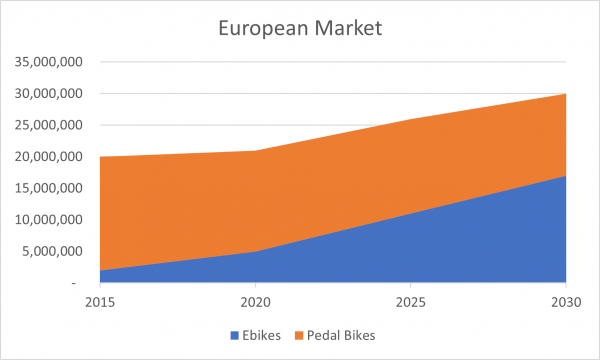
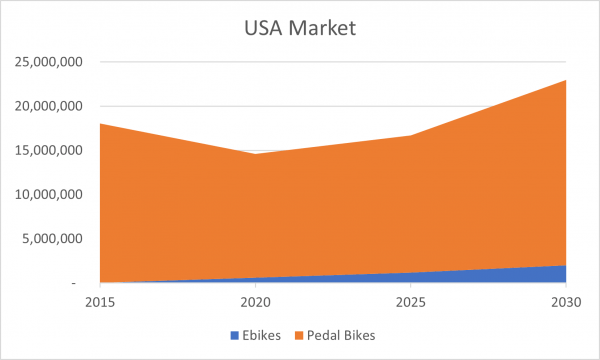
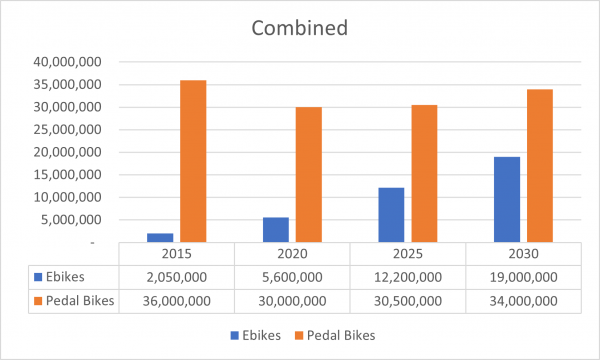
The coming decade is likely to usher in more changes and increased usage, as cycling becomes more socially acceptable, safe, personal, convenient, a reliable means of personal mobility, and more experiential. We are all adjusting to change and adjusting to new consumer behavior patterns. Taking advantage of the coming waves of opportunity will require more investment, efforts, passion, agility, and responsiveness.
The future is now. Industry leaders and suppliers need a sense of urgency — and a mandate — to believe and invest. It is critical to develop strategies that will enable the business to meet consumers’ demands now and in the near future. $6b is at the doorstep. Are you going to act?
 Bob Margevicius is the Executive Vice President at Specialized Bicycle Components. His background lends itself to leadership, strategy, personal growth, international business, and value chain management. He has been involved in international global trade for close to 40 years starting as a product manager for a medium-sized bicycle company. Product focus has led to running a medium-sized bicycle company followed by leading the aspiring Specialized bicycle brand from obscurity to a global industry leader. Challenging each of these opportunities has taken perseverance, tolerance, patience, and the right attitude.
Bob Margevicius is the Executive Vice President at Specialized Bicycle Components. His background lends itself to leadership, strategy, personal growth, international business, and value chain management. He has been involved in international global trade for close to 40 years starting as a product manager for a medium-sized bicycle company. Product focus has led to running a medium-sized bicycle company followed by leading the aspiring Specialized bicycle brand from obscurity to a global industry leader. Challenging each of these opportunities has taken perseverance, tolerance, patience, and the right attitude.
 The NBDA has been here since 1946, representing and empowering specialty bicycle dealers in the United States through education, communications, research, advocacy, member discount programs, and promotional opportunities. As shops are facing never-before-seen circumstances, these resources offer a lifeline. Together, we will weather this. We at the NBDA will not waver in our commitment to serving our members even during this challenging time—but we need your support.
The NBDA has been here since 1946, representing and empowering specialty bicycle dealers in the United States through education, communications, research, advocacy, member discount programs, and promotional opportunities. As shops are facing never-before-seen circumstances, these resources offer a lifeline. Together, we will weather this. We at the NBDA will not waver in our commitment to serving our members even during this challenging time—but we need your support.
Now is the time to become a member as we join together to make one another stronger. Whether you’re a retailer or an industry partner, your membership in the NBDA is one of the best investments you’ll make this year.
Learn more about the benefits of being a member and join now.

